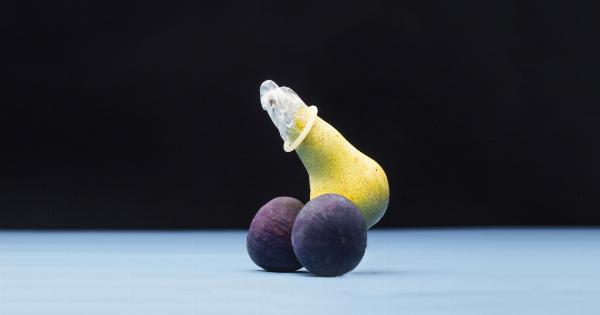Ovulation is a crucial phase in a woman’s menstrual cycle, wherein a mature egg is released from the ovary. This egg is then available for fertilization by sperm, consequently leading to pregnancy.
Understanding your ovulation window is crucial, especially if you are trying to conceive or using natural methods for birth control.
Signs of Ovulation
Before we discuss how to determine your ovulation window, let’s take a quick look at some common signs of ovulation:.
1. Change in cervical mucus: During ovulation, your cervical mucus becomes clear, slippery, and similar to the consistency of egg whites. This change in mucus helps sperm travel to the fallopian tubes more easily.
2. Increase in basal body temperature (BBT): Basal body temperature rises slightly after ovulation due to hormone changes. Tracking your BBT daily can help identify your ovulation window.
3. Ovulation pain or Mittelschmerz: Some women experience mild pelvic pain on the side of the ovary that is releasing an egg. This pain is known as Mittelschmerz and can help pinpoint ovulation.
4. Breast tenderness: Hormone fluctuations during ovulation can cause breast tenderness or sensitivity.
5. Increased sex drive: Many women experience a heightened libido and increased sexual desire during ovulation.
Calculating Your Menstrual Cycle
Before determining your ovulation window, it’s essential to understand the length of your menstrual cycle. The menstrual cycle begins on the first day of your period and ends on the day before your next period.
The average menstrual cycle is around 28 days, but it can range from 21 to 35 days.
To calculate the length of your menstrual cycle, track the number of days between the first day of your period and the first day of your next period for a few months. This will help you identify the average length of your cycle.
The Ovulation Calendar Method
The ovulation calendar method, also known as the calendar rhythm method, predicts your ovulation window based on the length of your cycle. Here’s how to determine your ovulation window using this method:.
Step 1: Calculate the length of your menstrual cycle over several months and identify the average number of days.
Step 2: Subtract 18 from the total number of days in your shortest cycle to determine your first potentially fertile day.
Step 3: Subtract 11 from the total number of days in your longest cycle to determine your last potentially fertile day.
Step 4: The result will give you a range of days. For example, if your shortest cycle is 26 days and your longest cycle is 32 days, your ovulation window would be between day 8 and day 21 of your cycle (26-18=8, 32-11=21).
Note: The ovulation calendar method is most effective for women with regular menstrual cycles. If you have irregular cycles, other methods may be more reliable.
Ovulation Predictor Kits (OPKs)
Ovulation predictor kits (OPKs) are an excellent tool for determining your ovulation window. These kits detect the surge in luteinizing hormone (LH) in your urine, which occurs approximately 24 to 36 hours before ovulation.
Here’s how to use an OPK:.
Step 1: Read the instructions provided with the OPK to understand how to use the kit correctly.
Step 2: Start testing your urine a few days before you expect to ovulate, based on your average cycle length.
Step 3: Test your urine at the same time every day, preferably between 10 am and 8 pm, when LH levels are highest.
Step 4: When the test line on the OPK is as dark as or darker than the control line, it indicates a positive result. This means you are likely to ovulate within the next 24 to 36 hours.
Step 5: Have intercourse during the two to three days following a positive OPK result to maximize your chances of conception.
Monitoring Basal Body Temperature (BBT)
Basal body temperature (BBT) is your body’s temperature at rest, and it can help determine when you ovulate. Here’s how to track your BBT:.
Step 1: Purchase a BBT thermometer specifically designed for tracking basal body temperature.
Step 2: Take your temperature every morning before getting out of bed and record it on a chart or in a tracking app.
Step 3: Track your temperature over several months to identify patterns in your cycle.
Step 4: Your BBT will rise by around 0.5 to 1 degree Fahrenheit after ovulation due to the increase in progesterone. This rise indicates that you have already ovulated.
Step 5: By identifying the slight increase in your BBT, you can determine when ovulation has occurred. The most fertile days for conception are the two to three days before your BBT rises.
Cervical Mucus Monitoring
Monitoring changes in your cervical mucus is another natural method to determine your ovulation window. Here’s how to track your cervical mucus:.
Step 1: Check your cervical mucus daily by wiping the opening of your vagina with toilet paper or using your fingers.
Step 2: Pay attention to the appearance and texture of the mucus. During your non-fertile days, you are likely to have little to no mucus or dryness.
Step 3: As ovulation approaches, you will notice an increase in cervical mucus. It will become clear, slippery, and stretchy, resembling egg whites.
Step 4: The presence of abundant, stretchy cervical mucus indicates that you are approaching your ovulation window and are highly fertile.
Step 5: Have intercourse on days when you observe abundant cervical mucus to increase the chances of conception.
Combining Methods for Greater Accuracy
For the most accurate determination of your ovulation window, consider combining multiple methods. For example, use both an ovulation calendar and ovulation predictor kits to cross-reference your fertile days.
This combination will provide a more accurate prediction and increase your chances of conception.
Seeking Professional Help
If you are struggling to determine your ovulation window or have irregular cycles, it may be helpful to consult a healthcare professional. They can provide guidance, offer additional tests, or recommend fertility specialists if needed.
Conclusion
Timing is everything when it comes to determining your ovulation window.
By tracking your menstrual cycle, monitoring your basal body temperature, observing changes in cervical mucus, and using ovulation predictor kits, you can accurately identify your fertile days. Remember that every woman is unique, and understanding your body’s ovulation process is key to achieving pregnancy or effectively managing birth control naturally.































